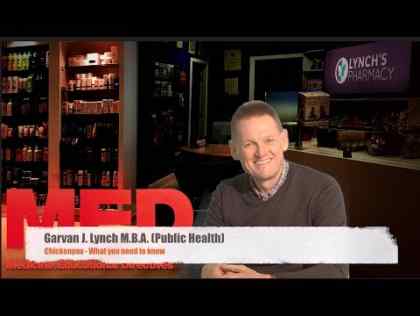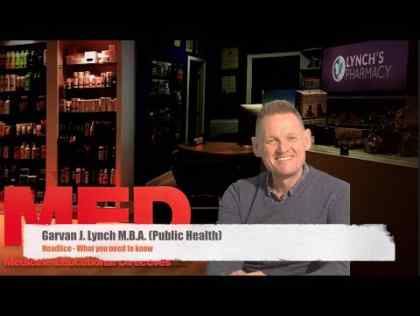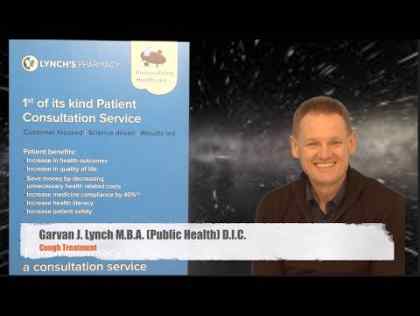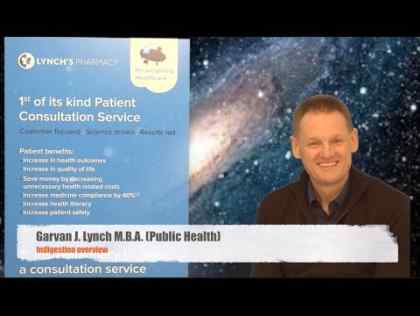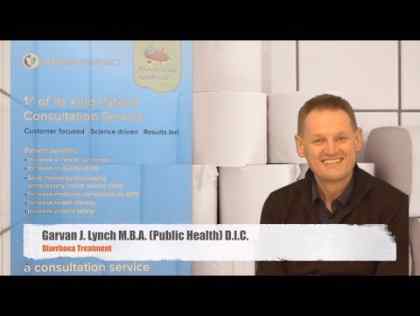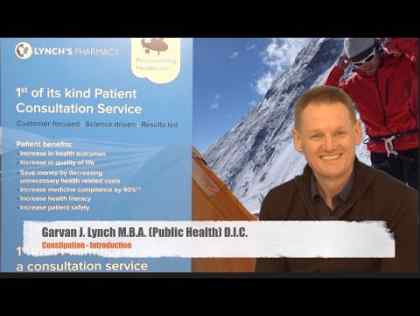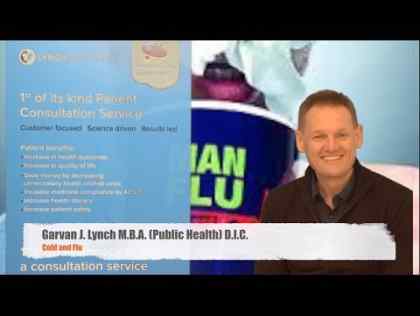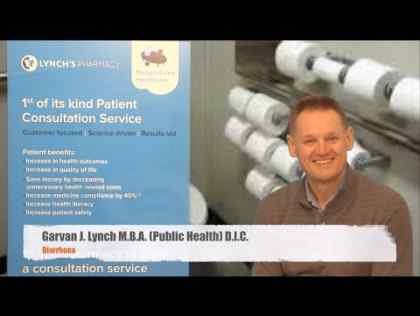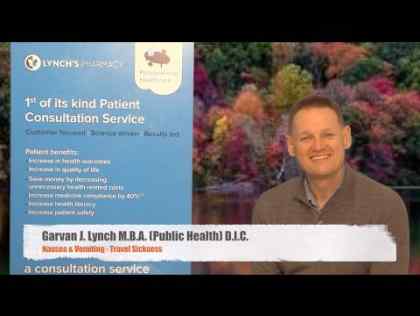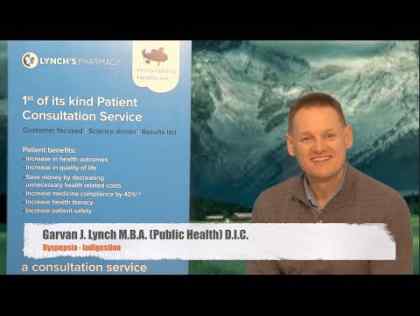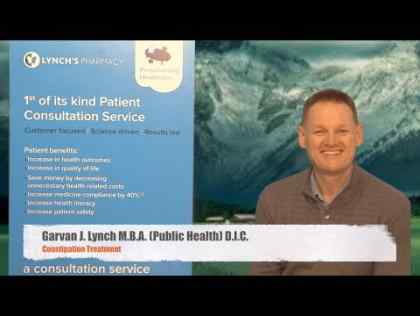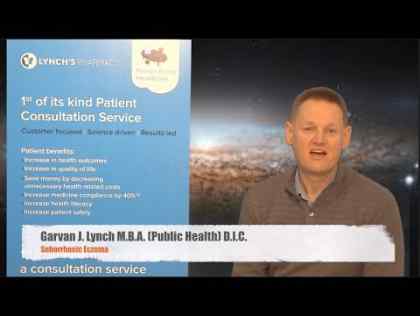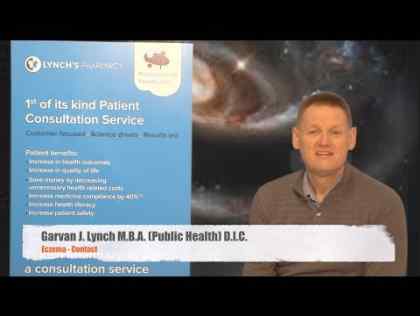Chickenpox (varicella)
Chickenpox is usually a mild and common childhood illness that can also occur at any stage of life. The illness can be associated with severe complications and even death so must be treated seriously in all cases.
Immunisation can help prevent the spread of chickenpox.
Chickenpox causes a rash of red, itchy spots that turn into fluid-filled blisters. They then crust over to form scabs, which eventually drop off.
Your child is likely to have a fever at least for the first few days of the illness and the spots can be incredibly itchy, so expect them to feel pretty miserable and irritable while they have chickenpox.
Some children have only a few spots, but in others they can cover the entire body.
The spots are most likely to appear on the face, ears and scalp, under the arms, on the chest and belly and on the arms and legs.
The incubation period for chickenpox is between one and three weeks. The most infectious time is between one and two days before the rash appears, but it continues to be infectious until all the blisters have crusted over.
Chickenpox can be severe at any age and have serious complications. Complications include:
- bacterial skin infections
- pneumonia
- swelling of the membranes covering the brain (aseptic meningitis)
- decrease in blood platelet cell (thrombocytopenia)
- may have a short term effect on movement (acute cerebellar ataxia)
- foetal abnormalities in pregnant women (see below)
- encephalitis (inflammation of the brain).
Pregnant women should be especially careful to avoid chickenpox as it can affect the unborn baby by causing foetal malformations, skin scarring and other serious problems (congenital varicella syndrome).
There is no specific treatment for chickenpox, but there are medicines and pharmacy products which can help alleviate symptoms, such as:
- paracetamol to relieve fever
- calamine lotion and cooling gels to ease itching.
In most children, the blisters crust up and fall off naturally within one to two weeks.
Adults who have had chickenpox as a child may also get shingles later in life, as they are both caused by the virus varicella zoster.
Click here for more - http://www.lynchspharmacy.com/health/chickenpox
Coughs, colds and ear infections in children
It is common for young children to get the odd cough, cold or even ear infection. Read further to find out more about these common childhood ailments.
Coughs
- In children cough is a common symptom which is commonly caused by a cold. Usually a cough is self limiting and not serious. If your child is feeding, drinking, eating and breathing normally and there’s no wheezing, a cough isn’t usually anything to worry about.
If your child has a bad cough that won’t go away, see your doctor. Causes of a more serious cough in children can include;
- croup
- whooping cough
- asthma
- pneumonia
- swallowing a foreign object e.g. peanut.
Signs of a more serious cause of a childhood cough can include;
- high temperature
- persistant or unual cough
- breathlessness at rest or on exertion
- occurs at night
- listless or overly tired
- in discomfort.
If your child has any of these symptoms take them to the doctor. If your child seems to be having trouble breathing, seek medical attention urgently or call an ambulance, even if it’s the middle of the night.
Although it’s upsetting to hear your child cough, coughing helps clear away phlegm from the chest or mucus from the back of the throat.
Sore throats
- Sore throats are often caused by viral illnesses such as colds or flu. Your child’s throat may be dry and sore for a day or two before a cold starts. Infant or child dosage paracetamol or ibuprofen can be given to reduce the pain.
- Most sore throats clear up on their own after a few days. If your child has a sore throat for more than 4 days, has a high temperature and is generally unwell, or is unable to swallow fluids or saliva, see your doctor.
Colds
- It is normal for a child to have 8 or more colds per year. This is because there are hundreds of different cold viruses and young children have no immunity to any of them as they've never had them before. Gradually they build up immunity and get fewer colds.
Most colds get better in 5 to 7 days. Here are some suggestions on how to ease the symptoms in your child:
- Increase the amount of fluid your child normally drinks.
- Saline nose drops can help loosen dried nasal secretions and relieve a stuffy nose. Ask your pharmacist, doctor or early childhood nurse about them.
- If your child has a fever, pain or discomfort, paracetamol or ibuprofen can help. There are child and infant products that will state on the packet how much you should give children of different ages.
- Encourage the whole family to wash their hands regularly to stop the cold spreading.
- Nasal decongestants can make stuffiness worse. Never use them for more than 2 or 3 days.
Ear infections
- Ear infections are common in babies and small children. They often follow a cold and sometimes cause a temperature. A child may pull or rub at an ear, but babies can’t always tell where pain is coming from and may just cry and seem uncomfortable.
- If your child has an earache but is otherwise well, give them infant or child dose paracetamol or ibuprofen for 12-24 hours. Don’t put any oil, eardrops or cotton buds into your child’s ear unless your doctor advises you to do so. Most ear infections are caused by viruses, which can’t be treated with antibiotics. They will just get better by themselves.
- After an ear infection your child may have a problem hearing for 2 to 6 weeks. If the problem lasts for any longer than this, ask your doctor for advice.
Glue ear
- Repeated middle ear infections (otitis media) may lead to 'glue ear' (otitis media with effusion), where sticky fluid builds up and can affect your child’s hearing. This may lead to unclear speech or behavioural problems.
- Your doctor will give you advice on treating glue ear.
For more click here - http://www.lynchspharmacy.com/health/common-cold-babies
Croup
Croup is very common in young children, mainly in children under 5 years old. It’s usually not serious. The inflammation is usually caused by the same viruses that cause the common cold, and is therefore more common in winter.
What is croup?
- Croup is a viral infection that causes swelling of the windpipe (trachea), the airways to the lungs (the bronchi) and the vocal cords (voice box). This swelling makes the airway narrower, so it is harder to breathe.
- A child with croup has a distinctive barking cough and may make a harsh sound, known as stridor, when they breathe in.
Croup diagnosis
- Croup can usually be diagnosed by a doctor and treated at home. Your doctor will diagnose croup after taking your child’s history and examining your child.
When to see your doctor
You should take your child to the doctor if:
- your child is having trouble breathing
- you can easily hear your child’s noisy breathing, even when they are resting quietly
- your child’s breastbone sucks in when they breathe in
- your child has trouble swallowing
- you’re worried.
If your child’s lips go blue, seek medical attention immediately. Severe croup requires emergency medical attention.
For more on this topic, click here - http://www.lynchspharmacy.com/health/croup
Diarrhoea and vomiting in children
- It can be very concerning to see your baby or child having bouts of diarrhoea and vomiting. This helpful information aims to explain some of the common causes and strategies to help you alleviate your child’s symptoms.
- Vomiting usually last 1-2 days. Diarrhoea usually lasts five to seven days.
Babies
- Most babies have occasional loose stools or faeces (poo) and breastfed babies normally have looser stools than formula-fed babies.
- Diarrhoea in a baby describes frequent, repeated passing of unformed, watery stools.
Toddlers and older children
- Some children between the ages of one and five pass frequent, smelly, loose stools that may contain recognisable foods, such as carrots and peas. Usually, these children are otherwise perfectly healthy and are growing normally. The diarrhoea may be due to drinking too much cordial or sugary drinks, but you should check with your doctor. Sometimes the doctor can’t find any cause.
Causes of diarrhoea and vomiting in children: Diarrhoea and vomiting may be caused by many different things, including:
- a virus
- a stomach bug
- food poisoning
- eating something you may have an allergy to.
- Treatments for diarrhoea and vomiting in children
- Babies and toddlers
Diarrhoea and vomiting is more serious in babies than older children because babies can easily lose too much fluid from their bodies and become dehydrated. Signs of dehydration are:
- sunken eyes
- a sunken soft spot (fontanelle) on a baby’s head
- few or no tears when they cry
- a dry mouth
- fewer wet nappies
- dark yellow urine
If your baby becomes dehydrated they will need extra fluids. If you are breastfeeding, keep offering feeds but feed more often. If you are bottle feeding, offer clear fluids in between feeds. You can also give an oral rehydration fluid from your local pharmacy, or get a prescription from your doctor.
Seek urgent medical attention if your baby is unwell and showing any of the following:
- less responsive
- has a temperature
- has blood or mucus in their poo
- has green vomit
- has severe abdominal pain
- not passing much urine
- vomiting has lasted more than a day
- you are concerned.
Do not give your baby or toddler anti-diarrhoeal drugs (not prescribed by the doctor) as they may be dangerous,
Children
- Your child will have large, runny, frequent or watery faeces (poos). The colour of the poo might vary from brown to green, and the smell can be quite offensive.
- Diarrhoea might also be associated with stomach cramps or pain.
Contact your doctor or go to your local emergency department if your child has:
- bad diarrhoea (8-10 watery motions or 2-3 larger motions a day) signs of dehydration
- diarrhoea and is vomiting at the same time
- frequent vomiting and can’t keep down any fluids
- diarrhoea that is particularly watery
- diarrhoea that has blood or mucus in it
- diarrhoea that lasts for longer than 10 days
- diarrhoea and you are concerned
- bad stomach pain
- green vomit.
Diarrhoea and vomiting self care: If your child has diarrhoea and vomiting there are a number of things you can do to help manage their condition. Here is some self-help information:
- Feeding and meal times
- Breast and bottle fed babies should continue to be given their normal feeds (at normal strength).
- If your child is on solid foods, be guided by their appetite. There is no evidence that fasting benefits someone with diarrhoea and vomiting.
- If your baby is under one year old, you should try to give them more fluids to avoid them becoming dehydrated.
- Older children should eat normally. Foods high in carbohydrates, like bread, potatoes, pasta and rice are good, and soup will also help replace fluids.
- Maintain good personal hygiene.
- With formula-fed babies, make sure that bottles are sterilised carefully.
- Avoiding dehydration
- Encourage your child to drink their usual amount of fluids. Children lose fluids through vomiting so your child will require extra.
- Specially prepared children’s rehydration drinks can be bought from your local pharmacy. Always follow the instructions on the packet.
- If your child refuses rehydration drinks try diluting fruit juice with water.
- Sports drinks and energy drinks should be avoided as a rehydration fluid option.
- Medicines
- Don't give your child any medicines to stop diarrhoea without medical advice.
- Antibiotics are not usually given to treat diarrhoea and vomiting, as the cause of the condition is often due to a virus. Antibiotics only work on fighting bacteria and not viruses.
- Keep your child away from other children while your child is unwell.
- Hygiene and cleanliness
- For babies and children who wear nappies, a barrier cream may help to prevent soreness or nappy rash developing.
- Ensure your child’s bottom is cleaned gently and thoroughly, after each episode of diarrhoea to avoid irritation to the skin.
- Wash your hands thoroughly with soap and warm running water to prevent the spread of infection. Dry your hands thoroughly but do not share towels as this can spread an infection. Wash your hands:
- Before handling food, including babies’ bottles
- Before eating
- After going to the toilet or changing your child’s nappy
- After cleaning up blood, faeces or vomit
- After wiping a nose, either your child’s or your own
- After handling garbage
- Clean surfaces – washing with detergent and water is a very effective way of removing germs from surfaces you have touched.
- Do not share personal items – your child should use their own personal items, such as towels, toothbrushes, flannels or face cloths.
- If your child has diarrhoea, organise a separate toilet to other people if possible and clean it with disinfectant after use.
- Do not take your child swimming until two weeks after their last episode of diarrhoea or vomiting.
- If your child has diarrhoea or vomiting they should not go to school or day care for 24 hours after their last episode of either.
- If your child has been diagnosed with Norovirus, or has diarrhoea and vomiting following contact with someone else with Norovirus, disinfect any surface that may have been contaminated.
- Immediately remove and wash clothing or bedding contaminated with diarrhoea or vomit.
- Sleeping
- If your child has diarrhoea or vomiting, they may feel tired and irritable. Always place your baby on their back in their cot to sleep, as this position reduces the risk of Sudden Unexpected Death in Infancy.
For more on this topic, click here - http://www.lynchspharmacy.com/health/diarrhoea
Fever in children
Fever is not an illness in itself, but is the sign of an illness. Children get fevers for all kinds of reasons. Most fevers, and the illnesses that cause them, last only a few days. But sometimes a fever will last much longer, and might be the sign of an underlying chronic or long-term illness or disease.
- A fever is a high temperature. As a general rule, in children, a temperature of over 37.5 °C is a fever.
- It can be worrying if your child has a high temperature, but it is very common and often clears up on its own.
- A quick and easy way to find out if your child has a fever is to take their temperature using a thermometer.
- Most fevers are caused by infections or other illnesses. A fever helps the body to fight infections by stimulating the immune system (the body's natural defence against infection and illness).
- By increasing the body's temperature, a fever makes it more difficult for the bacteria and viruses that cause infections to survive.
- Your baby's or child's temperature can also be raised during teething (when the teeth start to develop), following vaccinations or if they overheat due to too much bedding or clothing.
- If your child seems to be well other than having a high temperature - for example, if they are playing and attentive - it is less likely that they are seriously ill.
You should contact your doctor urgently if your child:
- is under three months of age and has a temperature of 38 °C or above
- is between three and six months of age and has a temperature of 39 °C or above
- is over six months and shows other signs of being unwell – for example, they are floppy and drowsy or you are concerned about them.
- If your child has a fever, it's important to keep them well hydrated by giving them plenty of cool water to drink. Even if your child isn't thirsty, try to get them to drink little and often to keep their fluid levels up.
For more on this topic, click here - http://www.lynchspharmacy.com/health/fever
Food allergies in children
Babies are more likely to develop allergies if there's a history of eczema , asthma , hay fever or food allergies (known together as 'atopy') in the family.
It's recommended that when your infant is ready, at around 6 months, but not before 4 months, start to introduce a variety of solid foods, starting with iron rich foods, while continuing breastfeeding. Hydrolysed (partially and extensively) infant formula are not recommended for prevention of allergic disease.
When you start introducing solids (weaning), introduce the foods that commonly cause allergies one at a time so that you can spot any reaction. These foods are: milk, eggs, wheat, nuts, seeds, fish and shellfish. Don't introduce any of these foods before six months. There is evidence that infants should be given allergenic solid foods including peanut butter, cooked egg and dairy and wheat products in the first year of life. This includes infants at high risk of allergy.
Many children outgrow their allergies to milk or eggs, but a peanut allergy is generally lifelong.
Peanut allergy
- Your child has a higher risk of developing a peanut allergy if they already have a known allergy (such as eczema or a diagnosed food allergy), or there's a history of allergy in their immediate family (such as asthma, eczema or hay fever).
- If this is the case, talk to your doctor before you give peanuts or food containing peanuts to your child for the first time.
- If you would like to eat peanuts or foods containing peanuts (such as peanut butter) while breastfeeding, you can do so unless you're allergic to them or your health professional advises you not to.
- Avoid giving your child peanuts and foods containing peanuts before the age of six months. Foods containing peanuts include peanut butter, peanut (groundnut) oil and some snacks. Small children are at a higher risk of choking on small objects, so avoid giving whole peanuts or nuts to children under age five.
- Read food labels carefully and avoid foods if you're not sure whether they contain peanuts.
- Don’t be tempted to experiment by cutting out a major food, such as milk, as this could lead to your child not getting the nutrients they need. Talk to your doctor, who may refer you to a registered dietitian.
How will I know if my child has a food allergy?
An allergic reaction can consist of one or more of the following:
- diarrhoea or vomiting
- a cough
- wheezing and shortness of breath
- itchy throat and tongue
- itchy skin or rash
- swollen lips and throat
- runny or blocked nose
- sore, red and itchy eyes.
In a few cases, foods can cause a very severe reaction (anaphylaxis) that can be life-threatening. If you think your child is having an allergic reaction to a food, seek medical advice urgently as symptoms can worsen rapidly. If breathing is affected, call your Doctor immediately.
For more on this topic, click here - http://www.lynchspharmacy.com/health/food-alergy
Measles
- Measles is a highly infectious disease caused by a virus that is spread from person to person through droplets in the air. It can be very unpleasant and possibly lead to serious complications.
- Anyone can get measles if they haven’t been vaccinated or had it before, although it’s most common in young children and young unvaccinated adults.
- Measles is a vaccine preventable disease and vaccination against the disease is recommended as part of routine childhood immunisation.
Measles symptoms
- Early symptoms of measles include fever, cough and sore, watery eyes. A rash appears after the third or fourth day. The spots are red and slightly raised.
- Someone with measles is infectious for one week before and after the rash appears.
If you have measles symptoms
- Call your doctor if you have any measles symptoms. Let the clinic know about your symptoms so they can consider whether you may be infectious.
- If you are diagnosed while visiting a clinic, they might isolate you in a separate room for the same reason.
- Anyone who suspects they might have measles should stay home and should not attend school, child care or work.
Measles prevention
- The best way for you to protect yourself and others is to get vaccinated.
- If you have children, remember to vaccinate them at 12 and 18 months.
- Vaccination is free and can be done by your doctor.
Measles immunity
- Anyone who has not had measles before and hasn’t been vaccinated can be infected. However, cases of re-infection after you have had the virus are extremely rare because the body builds up immunity (resistance) to the virus.
- Most people who are not immune from measles and are in close contact with somebody who is infected will catch it.
What causes measles?
- Measles is caused by a type of virus called a paramyxovirus. This kind of virus spreads from person to person via ‘droplets’ from coughing or sneezing.
- You can catch measles by breathing in these droplets or, if the droplets have settled on a surface, by touching the surface and then placing your hands near your nose or mouth. The measles virus can survive on surfaces for a few hours.
- Once inside your body, the virus multiplies in the back of your throat and lungs before spreading throughout your body, including your respiratory system and the skin.
For on this topic, click here - http://www.lynchspharmacy.com/health/measles
Rubella (German measles)
- Rubella (also known as 'German measles') is a viral infection that used to be common in children. It is usually a mild infection.
- Symptoms of rubella include a distinctive red-pink skin rash, swollen glands (nodes), and cold-like symptoms such as a mild fever, sore head and runny nose.
- Rubella's incubation period is between 2 and 3 weeks with its infectious period lasting from 1 week before the rash first appears until at least 4 days after it's gone.
- It's recommended children are immunised against rubella as part of their routine childhood immunisation program.
What causes rubella?
- Rubella is caused by the rubella virus that's spread through personal contact, or by coughing and sneezing. Once you have had rubella then you normally develop a lifelong immunity against further infection.
- Rubella is best prevented by the MMR vaccination.
Congenital rubella syndrome
- If a pregnant woman who does not have immunity to rubella (either due to previous infection or vaccination) catches the rubella virus, then the virus can be passed on to her unborn baby.
- The virus can disrupt the development of the baby, causing a series of birth defects that are known as congenital rubella syndrome (CRS).
- The risk of CRS affecting the baby and the extent of the birth defects it causes depends on how early in the pregnancy the mother is infected. The earlier in the pregnancy the greater the risks. CRS can include hearing and visual impairments, developmental delay and other problems in the baby.
- As many as 9 out of 10 babies whose mother caught rubella during the first 10 weeks of pregnancy will have CRS, with multiple birth defects. After 20 weeks there is no risk of the baby developing CRS.
For more on this topic, click here - http://www.lynchspharmacy.com/health/rubella
Whooping cough
- Whooping cough (also known as 'pertussis') is a highly contagious bacterial infection of the lungs and airways.
- The disease is highly infectious and most serious in babies under the age of 12 months, particularly in the first few months.
- Babies are at greatest risk of harm from whooping cough as they have soft airways that are vulnerable to damage from the severe coughing bouts, and may not yet be immune from vaccination.
- Older children and adults, including those who have been vaccinated, can still get whooping cough. While it is not as critically dangerous as it is in small babies, it is still a distressing condition, with the cough lasting up to 3 months. Whooping cough has been called the ‘100 day cough’.
The condition usually begins with a persistent dry and irritating cough that progresses to intense bouts of coughing. Particularly in small children, these bouts can be followed by a distinctive 'whooping' noise as the child breathes in, which is how the condition gets its name, but in many cases the only sign is a persistent hacking cough.
Other symptoms include a runny nose, raised temperature and vomiting after coughing.
The incubation period for whooping cough is roughly between 7 to 20 days with its infectious period lasting from the first signs of the illness until about three weeks after coughing starts.
If an antibiotic is given, the infectious period will continue for up to five days after starting treatment.
For more on this topic, click here - http://www.lynchspharmacy.com/health/whooping-cough
References:
http://www.hse.ie/eng/health/immunisation/pubinfo/adult/pertussis/
http://emedicine.medscape.com/article/967268-overview
http://www.nhs.uk/conditions/whooping-cough/pages/introduction.aspx
http://www.webmd.com/children/features/whooping-cough-what-you-need-to-know

